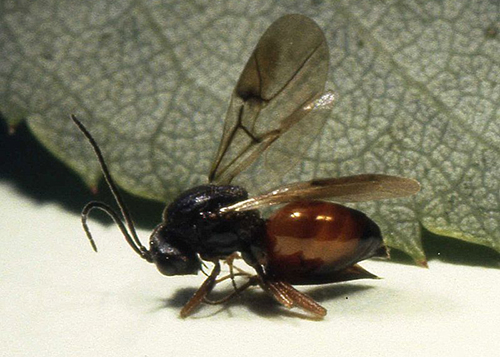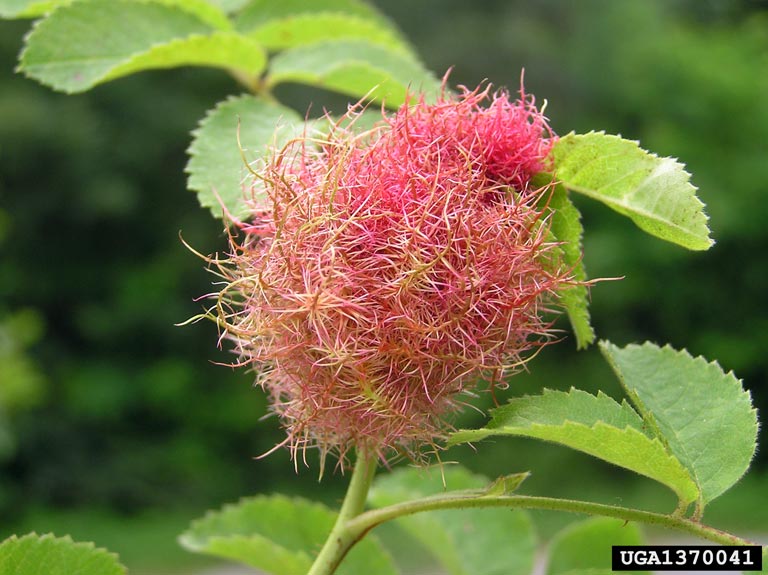Integrated Pest Management
Rose Gall Wasps
Diplolepis spp.
Pest Description
- adults: very tiny and seldom seen
- larvae: grub-like; found within galls
- pest noticed by the presence of galls
- each species creates a unique gall
Host Plants, Diet & Damage
- most common on roses and oaks
- galls can occur on acorns, branches, buds, flowers, leaves, roots and twigs
- larval feeding causes round, spiny, single/multiple or other types of galls
- galls do not typically affect the overall health of the tree
- excessive galling of branches and twigs can cause plant stunting or dieback
Biology, Life Cycle & Damaging Life Stage
- overwinter as larvae in the gall
- pupate within the gall or in the soil in spring
- emerge in April and May, coincident with budbreak
- eggs laid on emerging plant tissue or on/in swollen buds
- larval feeding produces galls
- most have one generation per year
- larvae are the damaging stage
IPM Recommendations
- Galls do not affect the overall health of the tree; tolerate pest.
- Rake and remove fallen leaves in the fall.
- Remove galled plant parts and destroy.
- Management with insecticides can be difficult and spotty.
- Apply an insecticide (carbamate; pyrethroid) at or just prior to budbreak to prevent egg laying to reduce gall formation (may not prevent all new gall formation).




